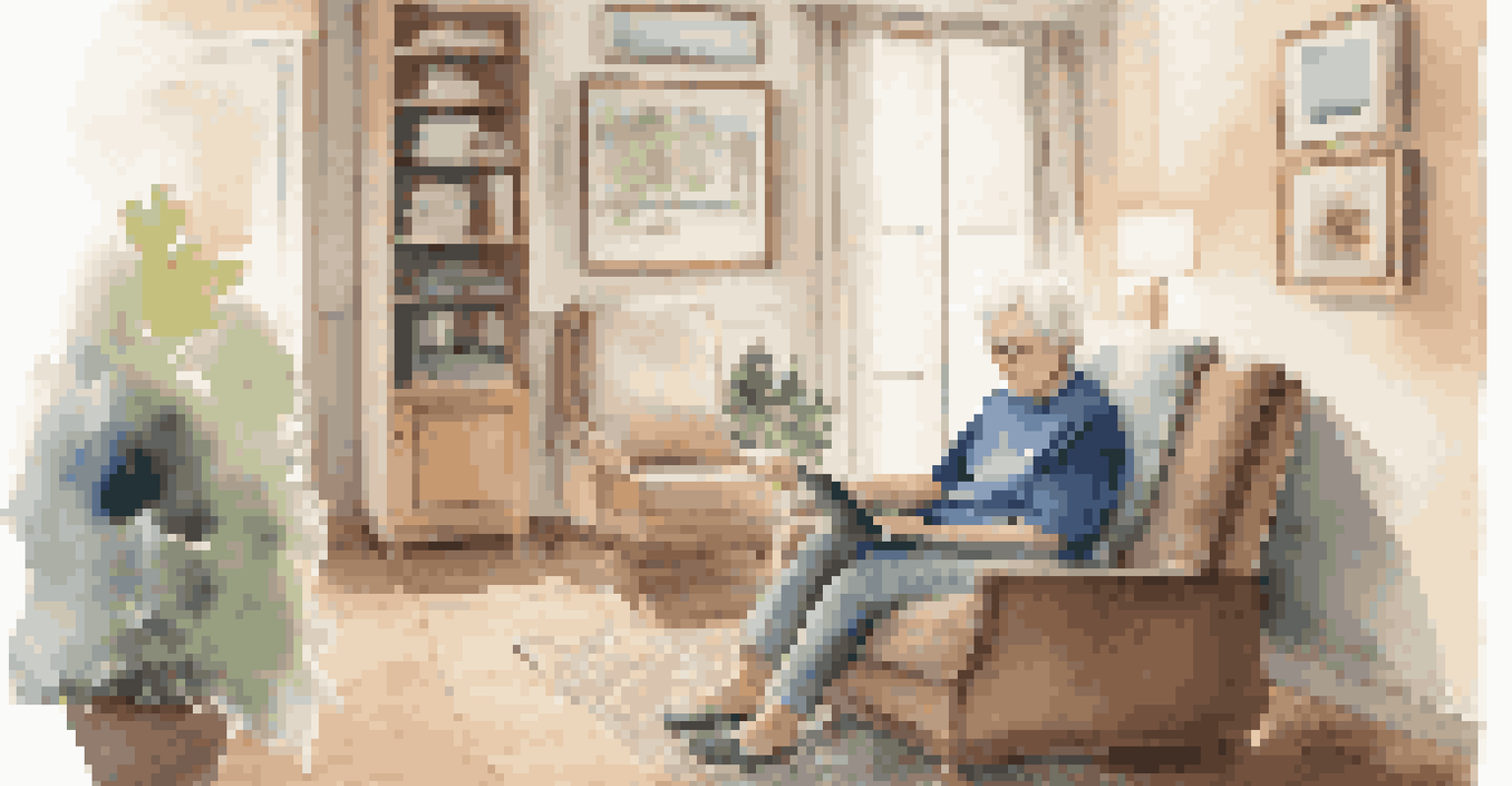Remote Consultations: Redefining the Doctor-Patient Relationship

Understanding Remote Consultations in Healthcare
Remote consultations, often referred to as telemedicine, allow patients to connect with healthcare providers from the comfort of their homes. This shift has become increasingly relevant in today's fast-paced world, where convenience is key. Patients no longer need to spend hours in waiting rooms, making healthcare more accessible than ever before.
Telemedicine is not a replacement for traditional healthcare, but rather a valuable complement that enhances patient access and convenience.
By utilizing technology such as video calls, patients can discuss their symptoms and receive advice without the need for an in-person visit. This approach not only saves time but also reduces the risk of exposure to illnesses, particularly during pandemic situations. For those with mobility issues or living in remote areas, telemedicine can be a game-changer.
As this practice continues to grow, understanding how it works and its benefits is essential for both patients and healthcare professionals. It's crucial to recognize that while remote consultations can enhance access to care, they also require a level of technological comfort and preparedness on both sides.
Benefits of Remote Consultations for Patients
One of the most significant advantages of remote consultations is the convenience factor. Patients can schedule appointments that fit their lifestyle, whether they’re at home, at work, or even on vacation. This flexibility allows individuals to prioritize their health without disrupting their daily routines.

Additionally, remote consultations can lead to cost savings. Patients might save money on travel expenses and time off work, making healthcare more affordable. For many, this means that they are more likely to seek medical advice when needed, leading to better health outcomes overall.
Convenience of Remote Consultations
Remote consultations offer patients the flexibility to receive healthcare from anywhere, saving time and reducing the need for in-person visits.
Moreover, remote consultations can reduce the anxiety some patients feel about visiting a clinic or hospital. The comfort of their own space can make discussions about sensitive health issues easier, fostering open communication between patients and providers.
Enhancing Communication in Remote Consultations
Effective communication is crucial in any doctor-patient relationship, and remote consultations offer unique opportunities to enhance this interaction. Digital platforms often provide features such as chat functions and shared documents, allowing patients to express their concerns in writing if they feel more comfortable that way. This can help bridge any communication gaps.
The future of medicine is not just about treating patients but enabling them to manage their health with technology.
Video consultations also enable doctors to observe non-verbal cues, similar to in-person visits. Body language, facial expressions, and tone of voice can provide vital clues that might be missed through text alone. This nuance can lead to more accurate assessments and tailored treatment plans.
However, it's important for patients to prepare for their virtual visits. Having a list of symptoms, questions, and medications handy can ensure that they make the most out of their consultations. This preparation fosters a more productive dialogue, ultimately enhancing the quality of care.
Challenges of Remote Consultations
Despite their many benefits, remote consultations come with challenges that cannot be overlooked. One of the most pressing issues is the digital divide; not everyone has equal access to the technology or stable internet connections necessary for effective telemedicine. This can create disparities in healthcare access and outcomes.
Furthermore, some patients may feel uncomfortable with technology, leading to frustration during appointments. For individuals who are not tech-savvy, navigating video calls or online portals can be daunting. This highlights the need for healthcare providers to offer support and guidance in utilizing these tools.
Challenges of Digital Access
Despite their benefits, remote consultations face challenges such as the digital divide and varying levels of technological comfort among patients.
Lastly, there are concerns about privacy and security. While healthcare providers take measures to protect patient data, the risk of breaches exists. Patients should be aware of how their information is stored and shared, prompting a necessary conversation about consent and digital literacy.
The Role of Technology in Remote Consultations
Technology plays a pivotal role in facilitating remote consultations, making them possible and efficient. From video conferencing software to patient management systems, various tools have been developed to streamline the healthcare experience. These advancements help healthcare providers offer timely and effective care without geographical constraints.
Moreover, artificial intelligence and machine learning are starting to play a role in triaging patients and providing preliminary assessments based on symptoms. This can help prioritize cases and ensure that those in need of immediate attention receive it faster. Such innovations are enhancing the overall efficiency of healthcare systems.
However, it's essential to strike a balance between technology and the human touch. While digital tools are incredibly useful, they should never replace the compassionate care that comes from personal interactions. Finding this balance is key to the future of effective remote healthcare.
Redefining the Doctor-Patient Relationship
Remote consultations are fundamentally changing the dynamics of the doctor-patient relationship. With increased access and flexibility, patients often feel more empowered to take charge of their health. This shift encourages a partnership model where patients actively participate in their care decisions, leading to better adherence to treatment plans.
As patients become more engaged, healthcare providers are also adapting their approaches. They are learning to listen more closely and provide guidance tailored to each individual’s unique circumstances. This collaborative environment fosters trust, which is essential for successful outcomes.
Future of Healthcare Integration
The ongoing integration of technology in healthcare suggests a flexible future, where remote consultations become a permanent option for patients.
In essence, remote consultations have the potential to create a more equitable and inclusive healthcare system. By breaking down barriers and enhancing communication, both parties can work together more effectively, leading to a healthier society.
Looking Ahead: The Future of Remote Consultations
As we look to the future, it’s clear that remote consultations are here to stay. The COVID-19 pandemic accelerated the adoption of telemedicine, and many healthcare systems are now permanently incorporating these services. This evolution suggests a more flexible healthcare landscape where patients can choose how they receive care.
Moreover, ongoing advancements in technology will likely continue to enhance the remote consultation experience. Innovations such as virtual reality and AI-driven diagnostics could soon revolutionize how we approach health assessments and treatments. Future developments will further bridge the gap between traditional healthcare and modern technology.

However, with this evolution comes the responsibility to ensure that all patients can benefit. Policymakers, healthcare providers, and tech developers must work together to create inclusive solutions that prioritize patient access and security. By doing so, we can build a healthcare system that is both advanced and equitable.